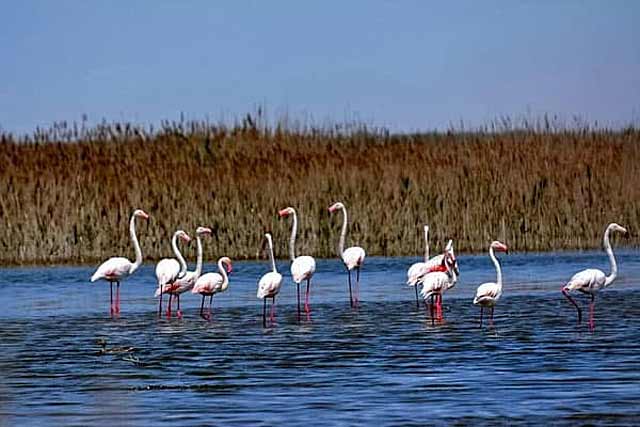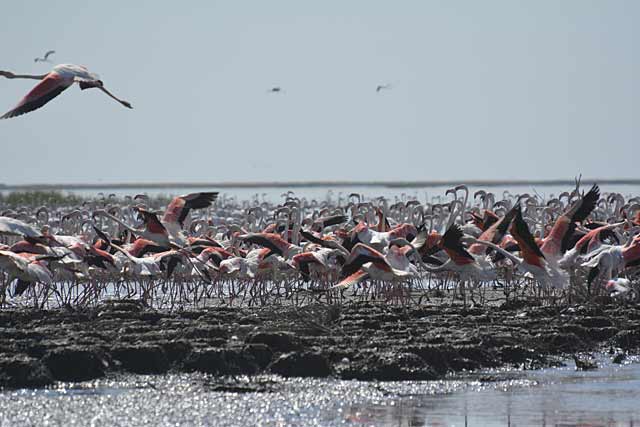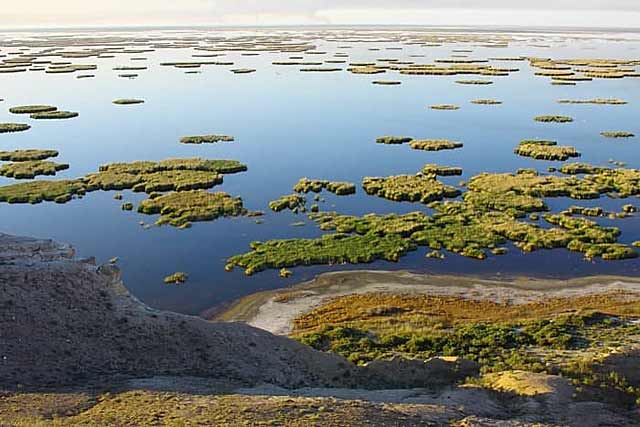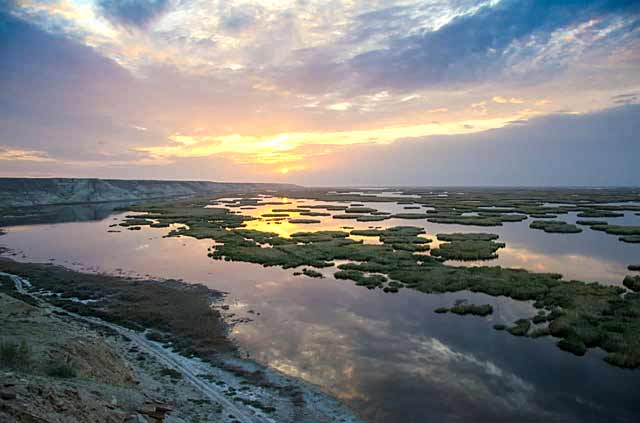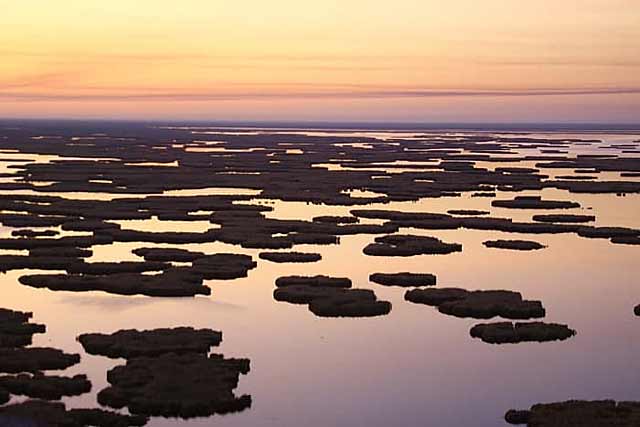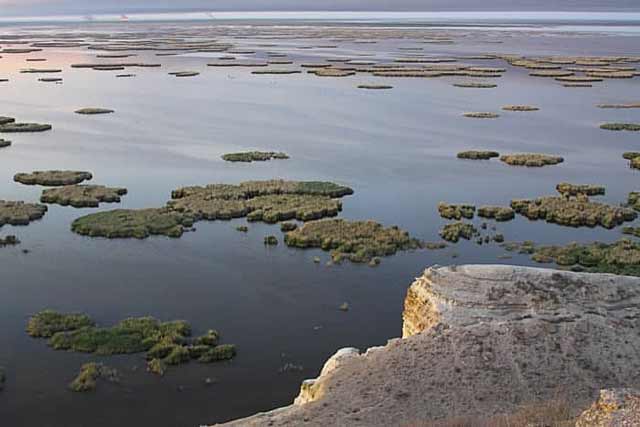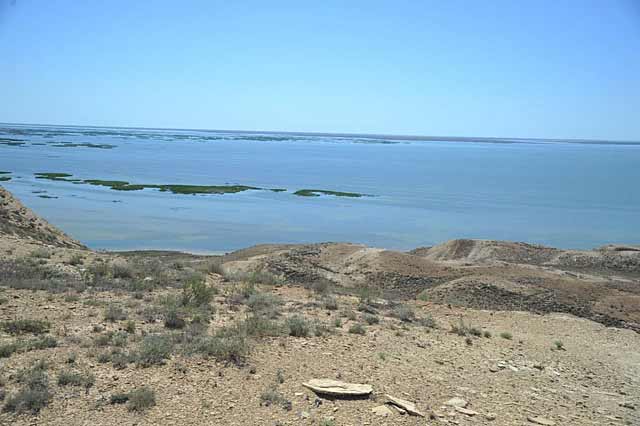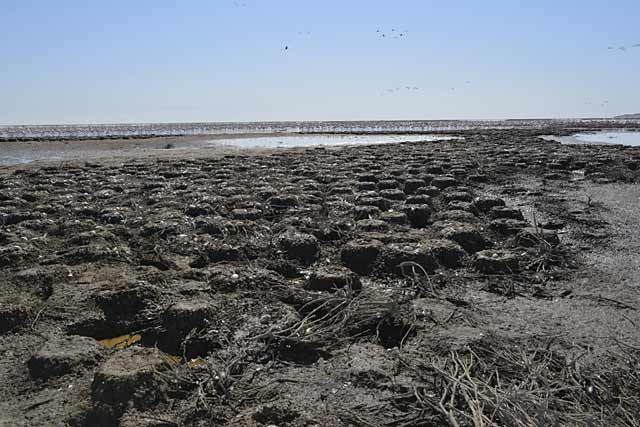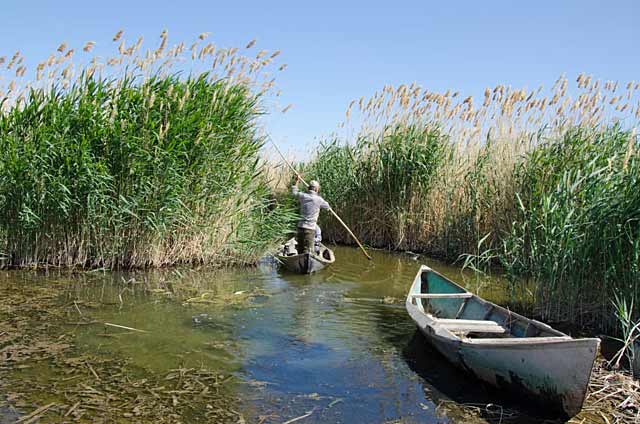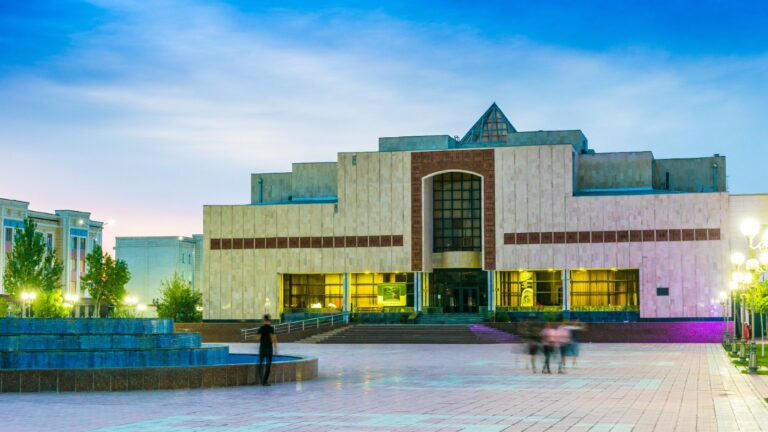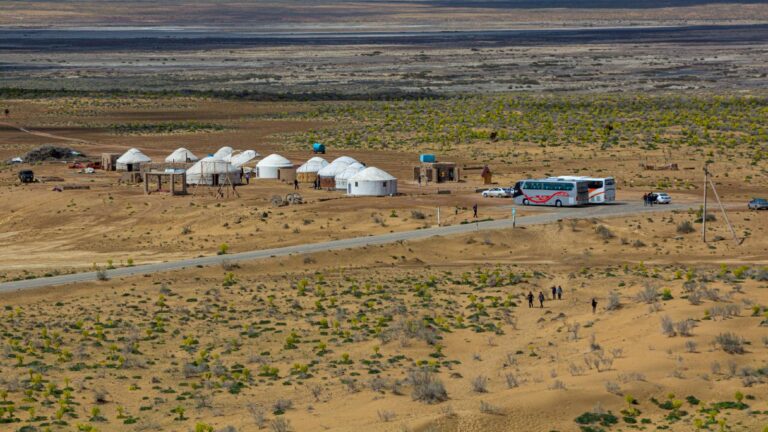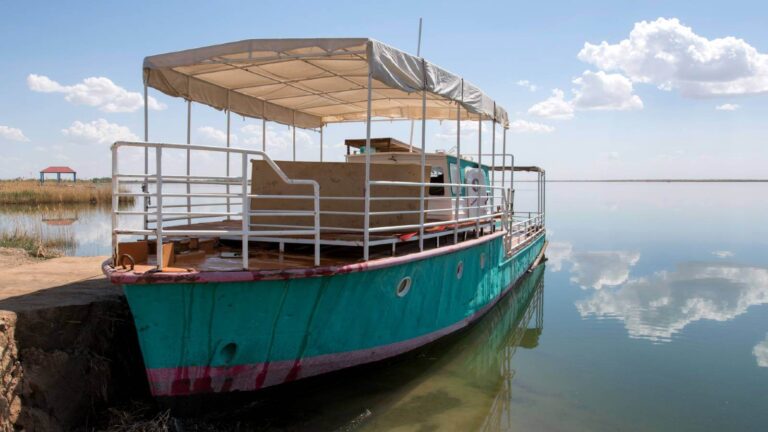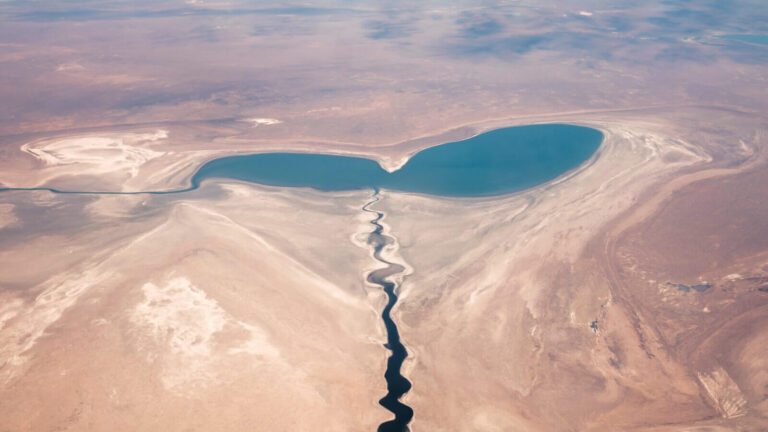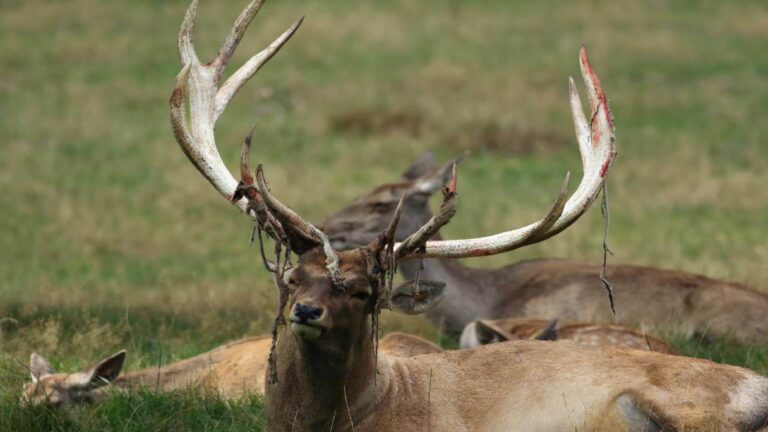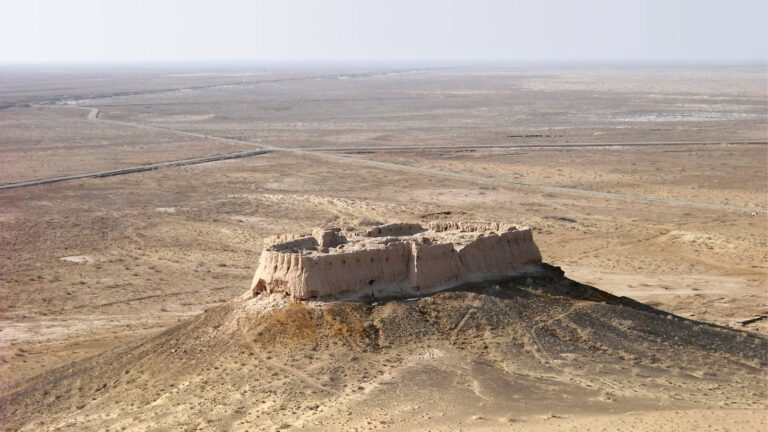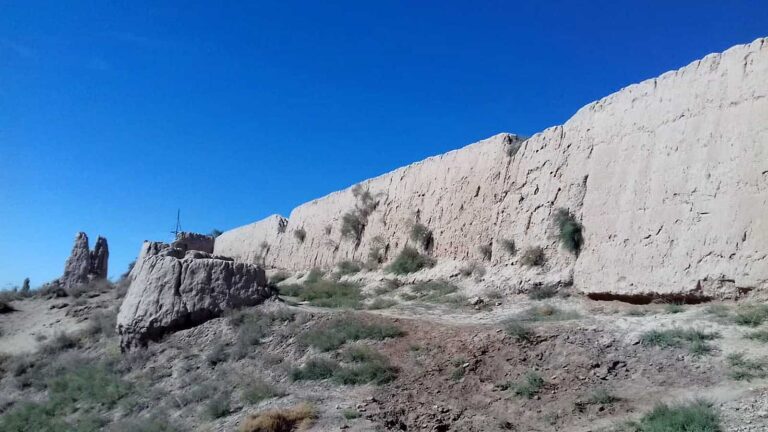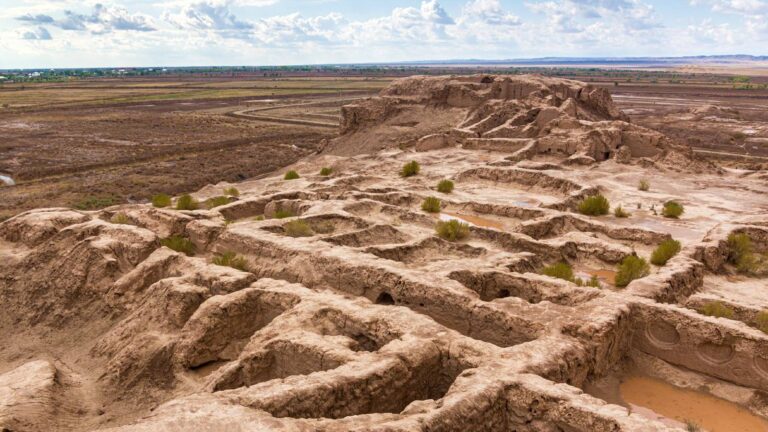Getting There
Due to the fact that, on the off-road territory, you need to go there only in off-road vehicles
What to Expect
Here you can enjoy a beautiful view, and in the spring you can see a flock of flamingos.
There are 2 main types of natural ecosystems with characteristic faunistic complexes on the territory: wetlands and desert areas. Habitats include large shallow fresh and salt lakes, dense reed and shrub thickets, salt marshes, swampy areas, saxaul plantations, canals, desert and semi-desert with cliffs of the adjacent Ustyurt plateau. A total of 117 bird species nest.
History
The area serves as an important nesting and migration site for globally threatened bird species. Migratory aggregations reach 86 thousand waterfowl, including up to 4 thousand (half of the world population) white-headed duck, a globally endangered species. In 2014, nesting of pink flamingos was noted. In general, there are 13 species of animals listed in the national and international Red Data Books on the territory.
The territory meets international criteria for inclusion in the list of water bodies of the Ramsar Convention. Within the framework of the GEF / WB project on the rehabilitation of ecosystems of Lake Sudochye, a justification was prepared for the inclusion of the reservoir in the Ramsar List.
Lake Sudochye has been identified by the project “The Most Important Bird Areas of Uzbekistan” as the most important bird area and is included in the international register.
Lake Sudochye, at one time, was the largest on the territory of Uzbekistan and the largest reservoir in the Amu Darya delta. Located in the Amu Darya delta, its area reached 350 sq. km, with a width of up to 15 km and a length of 50 km. The average depth of the lake was up to 2 meters.
The drying up of the Aral Sea and the cessation of the flow of river water into Lake Sudochye led to the fact that by 1968 it split into several separate small lakes. At the end of the 60s, the waters of collectors began to flow into the lake, subsequently on which the water regime completely depended on them. In 1972, the area of Lake Sudochye was already 96 square kilometers, and in 1978 – 78.5 square kilometers.
The unstable hydrological regime of the lake, the cessation of the discharge of river water caused its salinization. The water surface area in the Sudochye lake system was 41.9 sq. Km in 2000, and 9.6 sq. Km in 2001. km. and in 2002 – 6.5 km2. In 2002, the two-year dry period was replaced by a fairly high level of water content.
However, the discharge of water was not ensured to the proper extent and about 80% of the water practically uselessly went into the right-bank delta of the Amu Darya.
Facilities Available
No facilities

